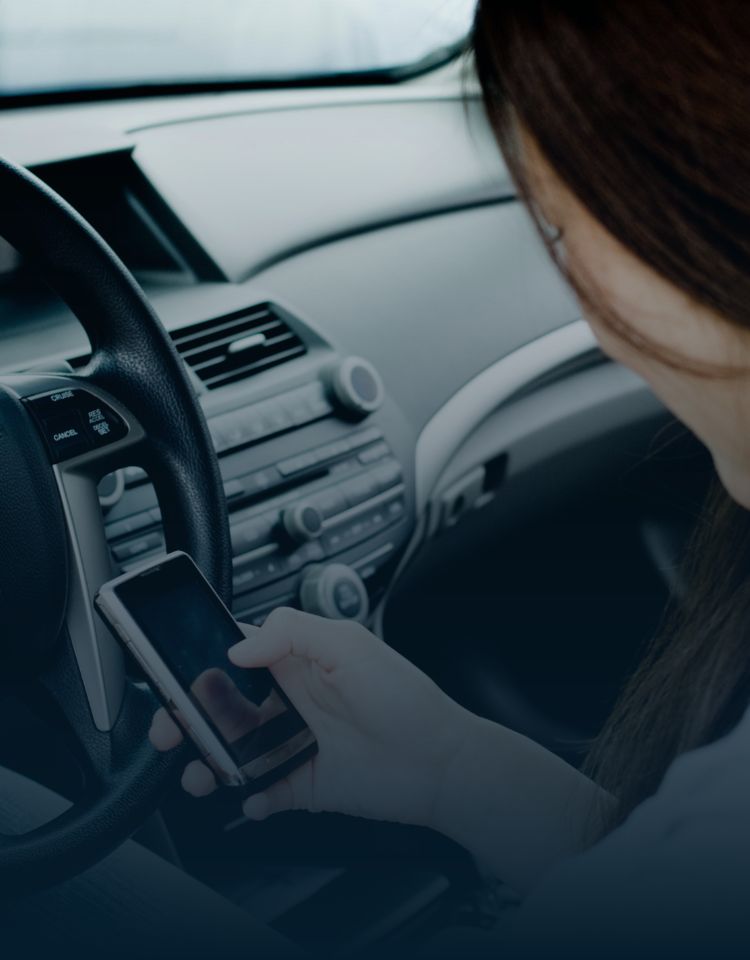Written By: William Harding and Cody Malloy, Student-at-Law
The week of October 16 to 22, 2022 is National Teen Driver Safety Week (NTDSW). The objective of NTDSW is to raise awareness to the risks of distracted driving amongst teenagers. Parachute, Canada’s national injury prevention organization, implemented the NTDSW program to raise awareness to these safety issues and to get communities involved to be part of the solution. Although distracted driving is mostly associated with texting while driving, other hazards include touchscreen consoles, food, beverages, passengers and pets.
According to Parachute, driving fatalities are the third leading cause of death for people aged 15 to 24 in Canada. Distracted driving has become a factor in more driving fatalities in some parts of Canada than impaired driving. The 15 to 24 years old age group has the most driving fatalities for all age groups under 75 years old. Overall, cellphone use while driving is a factor in 1.6 million collisions in Canada annually.
Drivers feel as though reading a text won’t distract them for very long. However, according to CAA, the average time it takes for a driver to read a text is five seconds. If you’re driving at 90 km/h, this is the equivalent of driving the entire length of a football field with your eyes on your phone instead of the road. Needless to say, a lot can go wrong while driving blind for five whole seconds. A driver who is texting is six times more likely to be involved in a collision. In a poll conducted last year, 39% of young drivers say they text while they drive, and 71% of those drivers did not think their actions constitute distracted driving.
By looking at your phone, you take your eyes and attention away from the road. Driving requires constant assessment and decision making, so even turning your attention to your phone for a split second can lead to damage, injury, or even death. Some best practices for safe driving include:
- Slow down – teenagers often are inclined to speed. If you combine excessive speed with distractions in the car, it can be a recipe for disaster. Ensure you obey the posted speed limit.
- Monitor the conditions – here in Ontario, we are subject to a variety of driving conditions thanks to the ever-changing seasons. Always be aware of how the weather can affect your approach to driving. Conditions such as rain or snow can increase the chances of a collision, which means that the distractions need to be kept to a minimum.
- Drive sober – driving under the influence of alcohol or drugs delays your reaction time, and severely hampers your ability to operate a motor vehicle safely. Alcohol is a factor in almost half of the fatalities from driving-related deaths from ages 16 to 25. If you plan on consuming substances that will affect your ability to drive, designate a sober driver in advance or take a cab or Uber.
- Set up your Bluetooth before departing – we’ve all been there when we realize once we’ve started driving that our phone’s Bluetooth isn’t connected. If you plan to connect your cellphone to your car’s Bluetooth to utilize handsfree features, ensure it’s connected before you hit the road. Connecting your phone’s Bluetooth can sometimes take up to a minute if you’re having an issue, which is a lot of time to take your eyes off the road. Always ensure you’re connected before you leave to minimize distractions.
- Utilize cellphone features such as Apple CarPlay – CarPlay allows iPhone users to have GPS navigation on their touchscreen console while having music and text message features using voice controlled technology. CarPlay allows for a safer driving experience. If your phone has CarPlay or similar apps installed, ensure that you take advantage of it for a safer drive.
Parents are role models for their kids. As such, leading by example is incredibly important, especially for inexperienced teenage drivers. As a parent, there are many ways you can be a good role model driver to your kids:
- Don’t text while you drive, even at a stop light – if teenagers see their parents driving while texting, they will think it’s okay for them to do so as well. Resist the temptation and keep your eyes on the road.
- Wear a seatbelt – although it seems obvious, seatbelts can literally be a matter of life or death. Always wear a seatbelt, no matter the length of the drive. Also ensure that your passengers are wearing their seatbelt properly.
- Obey the posted speed limits and drive sober – practice what you preach.
The consequences of distracted driving can be tragic. If you or your loved one has suffered an injury due to distracted driving, McLeish Orlando is here to help. Do not hesitate to contact us for a free consultation. One of our personal injury lawyers will evaluate your case.





